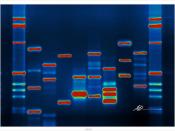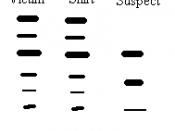When it comes to investigating crime, no matter the level of severity, nothing is more valuable to a criminal investigator than the use and implementation of forensic science. The results of such forensic investigations can be the difference between acquittal and conviction in a court of law. The single best aid that forensic scientists use is DNA, which has proven to be a powerful tool in the fight against crime. DNA evidence can identify suspects, convict the guilty, and exonerate the innocent. Throughout the Nation, criminal justice professionals are discovering that advancements in DNA technology are breathing new life into old, cold, or unsolved criminal cases. Evidence that was previously unsuitable for DNA testing because a biological sample was too small or degraded may now yield a DNA profile. Although DNA is not the only forensic tool that can be valuable to unsolved case investigations, advancements in DNA technology and the success of DNA database systems have inspired law enforcement agencies throughout the country to reevaluate cold cases for DNA evidence.
In the next few pages I am going to talk about the importance of forensics in criminal investigations and how the two are tied together.
Let me start off with an example of how forensics helped solve a case that went unsolved for 10 years and still would have been a "cold case" had it not been for the help of DNA. In 1990, a series of brutal attacks on elderly victims occurred in Goldsboro, North Carolina, by an unknown individual dubbed the "Night Stalker." During one such attack in March, an elderly woman was brutally raped and almost murdered. Her daughter's early arrival home was the only thing that saved the woman's life. The suspect fled, leaving behind materials intended to burn the residence and the victim...


